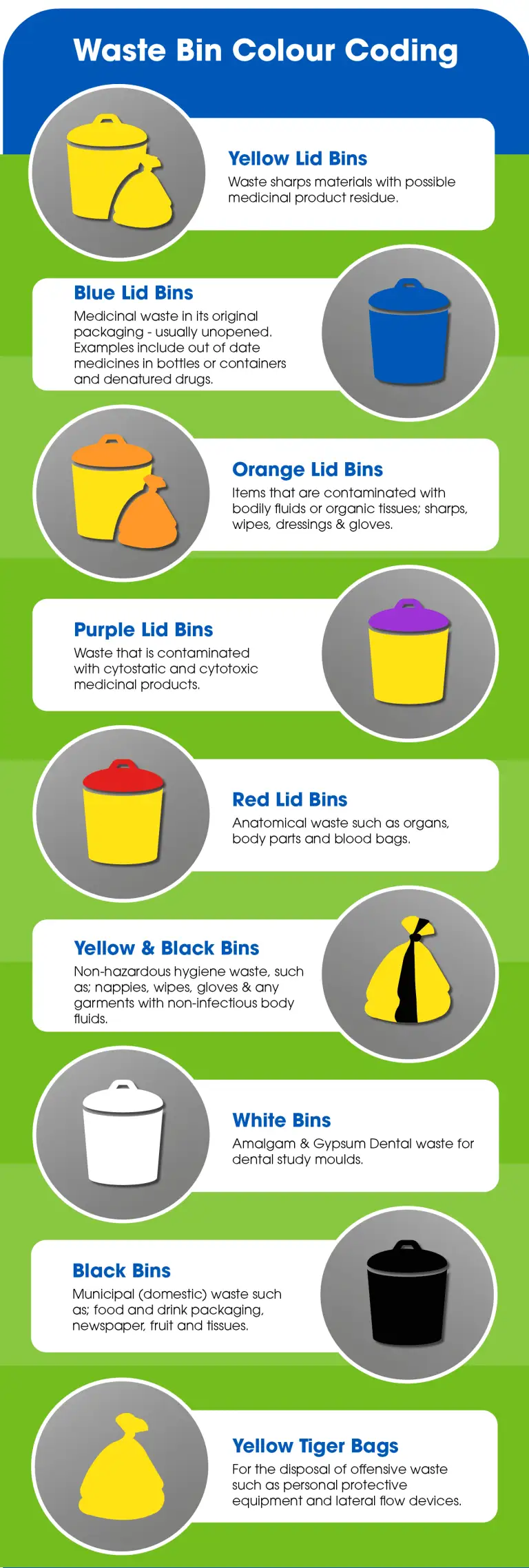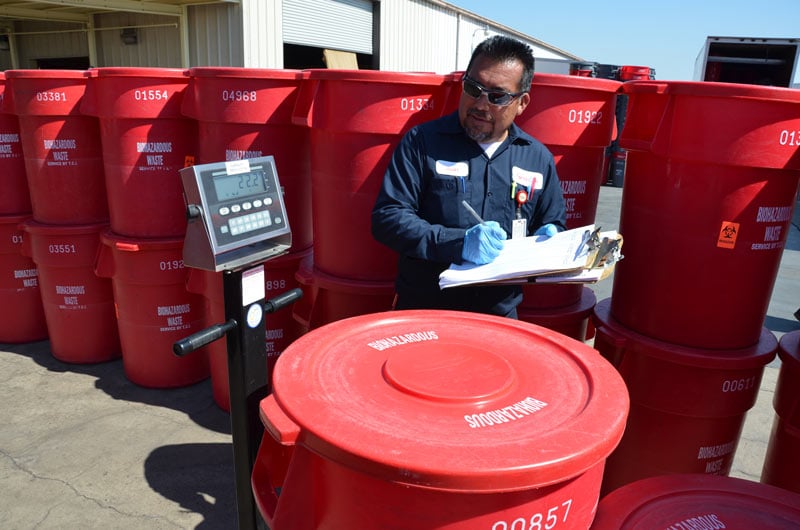Sustainable Solutions for Medical Waste Disposal
The correct management and disposal of clinical waste is essential in keeping a lasting and safe medical care system. This introduction will explore different lasting services for clinical waste disposal, consisting of waste segregation and sorting, on-site waste treatment systems, reusing and reuse programs, waste-to-energy conversion innovations, as well as cooperation and education and learning efforts.
Waste Partition and Arranging
The process of waste partition and sorting is essential in making certain proper administration and disposal of clinical waste. Medical waste is categorized into different classifications based upon its potential risk to human wellness and the environment. Proper segregation and sorting of waste assistance to decrease the risk of contamination and guarantee that each sort of waste is taken care of and gotten rid of suitably.
The initial step in waste segregation and sorting is to identify and divide various kinds of clinical waste at the point of generation. This includes acknowledging the numerous categories of waste, such as transmittable waste, sharps waste, pharmaceutical waste, and chemical waste. medical waste disposal service. Each classification calls for details taking care of and disposal approaches to avoid damage to health care workers, clients, and the environment

On-site Waste Treatment Systems
Proceeding from the previous subtopic on waste partition and sorting, an efficient service for lasting medical waste disposal is the implementation of on-site waste therapy systems - medical waste removal service. These systems permit health care facilities to treat their medical waste on-site, decreasing the demand for transport and disposal at off-site facilities. On-site waste therapy systems normally include technologies such as autoclaves, microwave systems, or chemical sanitation units
Autoclaves, generally utilized in health care setups, utilize high-pressure steam to decontaminate and treat clinical waste. This process effectively eliminates bacteria, viruses, and various other potentially hazardous microbes, rendering the waste safe for more handling and disposal. Microwave systems, on the other hand, usage microwave radiation to heat and deal with the waste, achieving comparable results to autoclaves.
Chemical disinfection devices involve the usage of chemicals to disinfect and treat clinical waste. These devices can use different anti-bacterials, such as chlorine-based options, to counteract microorganisms and lower the danger of contamination. The treated waste can then be securely dealt with in normal waste streams or undergo further therapy, such as shredding or incineration.
Carrying out on-site waste therapy systems offers a number of benefits. It lowers the environmental impact connected with carrying clinical waste to off-site centers, reducing carbon discharges and the danger of crashes throughout transportation. Furthermore, it supplies medical care centers with even more control over the therapy process, making certain compliance with guidelines and lowering the possibility for unapproved accessibility to delicate medical waste.
Recycling and Reuse Programs
To better boost lasting clinical garbage disposal techniques, healthcare centers can implement recycling and reuse programs, building upon the foundation of on-site waste treatment systems. Recycling and reuse programs offer an additional layer of environmental responsibility by diverting medical waste from garbage dump and finding alternative uses for certain products.
One secret aspect of recycling and reuse programs is the partition of waste at the resource. medical waste removal. By applying appropriate waste partition procedures, medical care centers can divide recyclable products, such as plastics, steels, and glass, from non-recyclable waste. This permits for the reliable recycling of these products, lowering the demand for virgin sources and decreasing the ecological influence of clinical waste disposal
In addition to recycling, healthcare facilities can discover additional hints possibilities for recycling specific medical products. Single-use products like surgical drapes and gowns can be decontaminated and recycled, minimizing the requirement for new products and lessening waste generation. Recyclable sharps containers can also be used, reducing the quantity of plastic waste produced from disposable containers.
Carrying out recycling and reuse programs calls for proper infrastructure and training - WasteX Medical Waste Disposal. Healthcare facilities should buy proper reusing bins, segregation systems, and sterilization devices, as well as make sure personnel are educated on correct waste monitoring practices
Waste-to-Energy Conversion Technologies
One prospective strategy to deal with clinical waste disposal sustainably is with the use of waste-to-energy conversion innovations. These modern technologies provide a promising service to the growing trouble of medical waste, which presents significant environmental and public wellness risks. Waste-to-energy conversion includes transforming the natural components of medical waste right into energy, such as warm or electrical power, with various procedures like gasification, incineration, and pyrolysis.
Incineration is the most typically utilized waste-to-energy modern technology for clinical waste disposal - WasteX Medical Waste Disposal. It involves the controlled burning of waste at heats, transforming it right into ash, gases, and warmth. This warmth can be used to produce vapor, which can then be exchanged electrical power
Pyrolysis and gasification are more recent modern technologies that supply even more eco pleasant alternatives to incineration. Pyrolysis involves heating the waste in the absence of oxygen, resulting in the manufacturing of gases and char. Gasification, on the various other hand, transforms waste right into a synthetic gas or "syngas" that can be made use of as a gas for power generation or various other commercial processes.
These waste-to-energy conversion technologies not only decrease the volume of clinical waste yet additionally supply a source of sustainable energy. In addition, they can help in reducing greenhouse gas exhausts and dependence on fossil fuels (WasteX Medical Waste Disposal). It is important to make sure that these technologies are applied with appropriate exhausts manage actions to lessen any possible negative effects on air quality and public health and wellness.
Collaboration and Education Initiatives
Collaboration amongst stakeholders in the healthcare market is essential for applying sustainable options for clinical garbage disposal. In order to successfully resolve the challenges related to clinical waste management, it is crucial for healthcare facilities, waste monitoring firms, regulators, and various other pertinent parties to collaborate.

Furthermore, education initiatives play a vital role in advertising lasting methods. Health care experts need to be knowledgeable about the environmental impact of inappropriate waste monitoring and the relevance of applying lasting options. Training programs and educational products can assist them comprehend the proper partition of waste, the use of environment-friendly options, and the benefits of waste-to-energy conversion modern technologies.
Cooperation and education can also promote the growth of guidelines and guidelines for medical garbage disposal. By interacting, stakeholders can add to the development of detailed policies that guarantee risk-free handling, transportation, and therapy of medical waste.
Conclusion
To conclude, embracing sustainable remedies for clinical waste disposal is important in order to minimize the adverse influence on the setting and public health and wellness. Waste segregation and sorting, on-site waste therapy systems, recycling and reuse programs, waste-to-energy conversion modern technologies, and collaboration and education and learning initiatives are all vital techniques to attain this goal. Applying these services calls for collaboration in between health care centers, waste management firms, and government companies, along with continuous education and learning and recognition campaigns.
The process of waste partition and sorting is crucial in ensuring appropriate management and disposal of medical waste.The initial action in waste segregation and sorting is to determine and divide different types of clinical waste at the point of generation. This includes acknowledging the numerous categories of waste, such as contagious waste, sharps waste, pharmaceutical waste, and chemical waste.Proceeding from the previous subtopic on waste partition and sorting, an effective service for lasting clinical waste disposal is the implementation of on-site waste treatment systems. The treated waste can then be safely disposed of in routine waste streams or undertake more treatment, such as shredding or incineration.